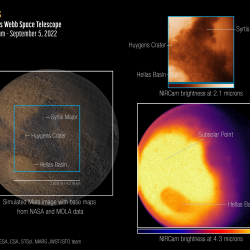For most measurements of atmospheric ingredients, the same technique is used: the DOAS method. The history of the principle of Differential Optical Absorption Spectroscopy (DOAS) goes back to the first measurements of the ozone layer by Fabry and Buisson in the 1920s.
It is widely used for NO2 measurements with ground instruments, but many other important atmospheric gases can be measured with this method (formaldehyde, sulphur dioxide, ozone, ...), and just as well from satellites and airplanes.
Chemical substance leaves fingerprint in light spectrum
The DOAS technique consists of studying the intensity of light as a function of wavelength; in short, of the light spectrum. When light travels through a gaseous medium (such as the atmosphere), the spectrum changes under the influence of absorption by the molecules present. This absorption is different for each chemical substance and thus each substance leaves a fingerprint in the observed light spectrum.
The difference in light intensity between wavelengths where a molecule strongly absorbs and those where absorption is weak makes it possible to determine the number of molecules along the light path.
Column of a gas (concentration, in vertical direction)
Applied to the spectrum of sunlight, which is scattered by the atmosphere, DOAS can be used to determine the column (the concentration of a chemical, integrated in a vertical direction) of a gas, such as nitrogen dioxide (NO2). This column can be seen as the thickness of the gas layer in the atmosphere. Since the measured quantity (in this case the NO2 column) is not in direct contact with the measuring instrument, the measurement technique is referred to as remote sensing.
Remote sensing and in situ measurements explained
DOAS measurements are complementary to data obtained from fixed air quality measurement stations on ground. The latter are based on a chemical analysis of samples taken from the air in direct contact with the station. Therefore, one speaks of in situ measurements. The knowledge of surface concentrations, measured in situ by these stations, is fundamental for studying the exposure of the population to harmful substances.
On the other hand, the measurements of gas columns from remote-sensing devices make it possible to calibrate and validate satellite data and convert them into surface concentrations. They also provide boundary conditions for model calculations of the chemistry and transport of pollutants, essential for better understanding and prediction of air quality.
To make an analogy with the human senses:
- remote sensing measurements can be compared with eyesight
- in situ measurements can be compared with smell.


